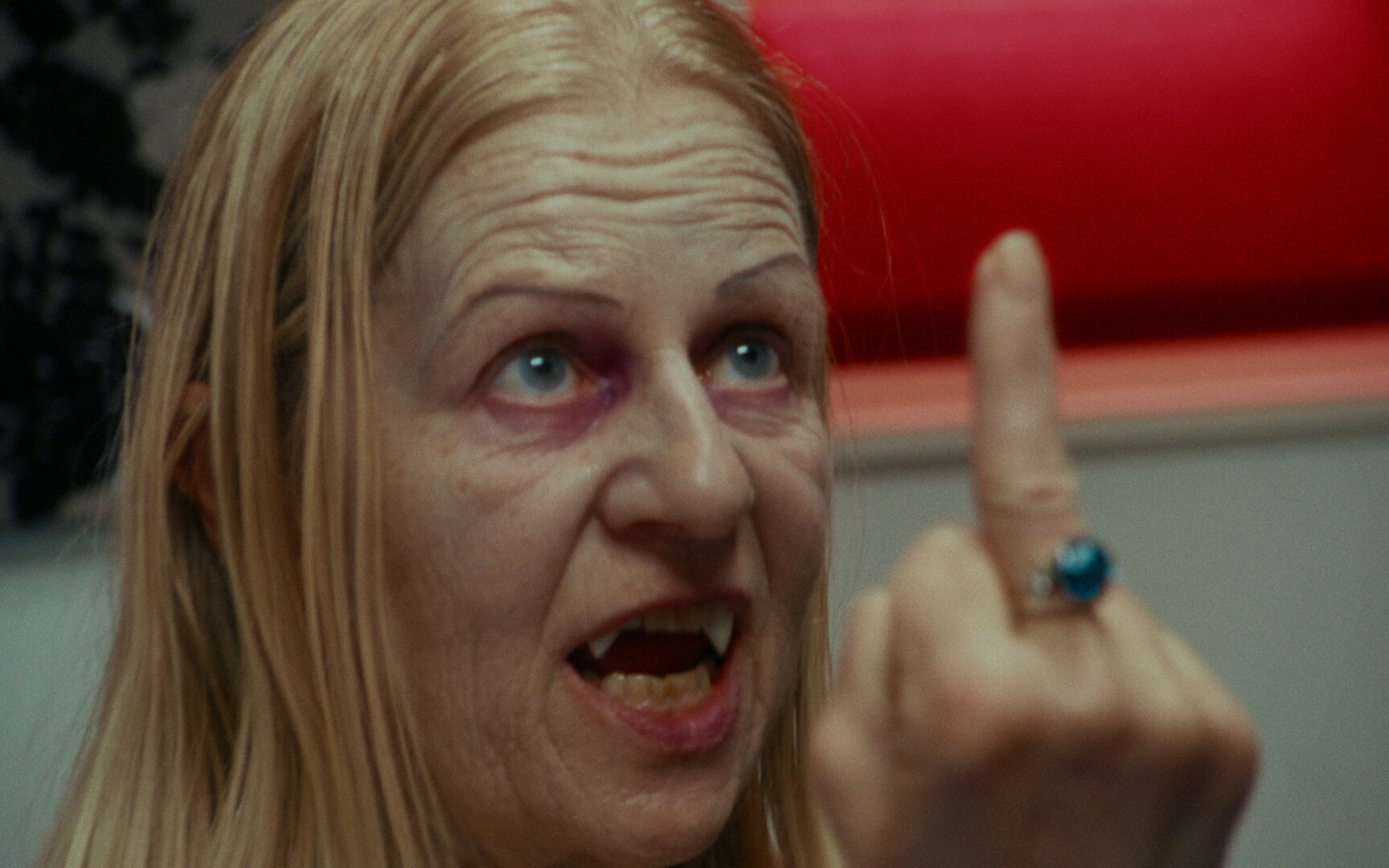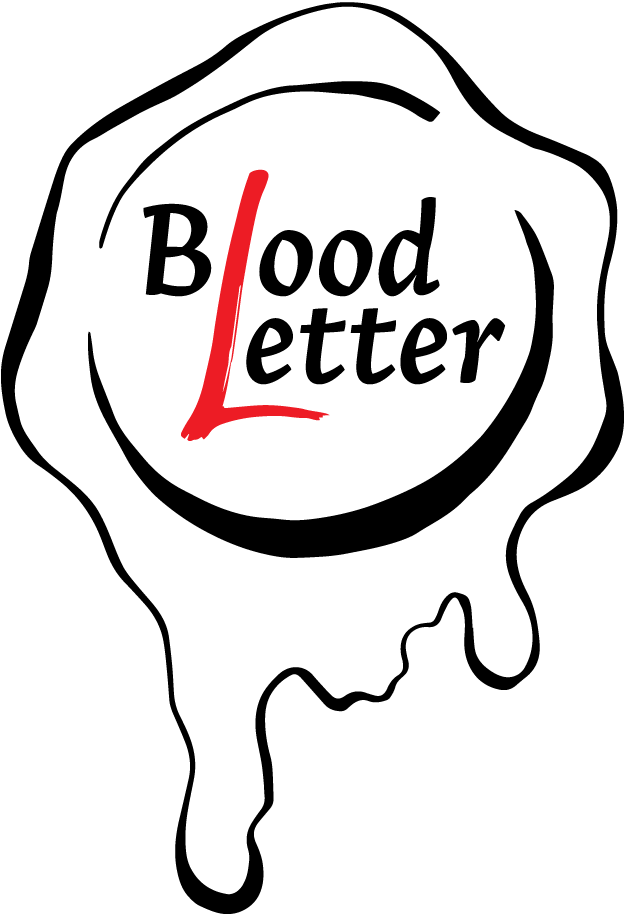BUURTHUIS 2
dir. Josefin Arnell

At first glance, this off-kilter short might seem light hearted. It starts with a goofy zombie scene shot in broad daylight, and continues with a series of strange events. A vampire real estate developer (Sabine Beilfuss) is scheming to build a luxury spa with bungalows in a town in the Netherlands, with the help of a Wizard (Wansley Kleberg). They work out a contract with The Man of the City (Leo Westra), planning to banish the people of the neighborhood using an evil spell. You see, the vampire prefers to employ fish, and not people. The spell works quickly, and things start going sideways. An espresso machine overflows and coffee spreads all over the floor, meatballs squirt goo right into the faces of diners, horns pop out of foreheads, and snakes start crawling amid a knitting circle as the dolls they knit get messed up. The people of the neighborhood try to save themselves, but are easily distracted by jewelry that falls out of the fish mouths. Their greed becomes their true enemy as they abandon any effort to overpower the spell, entranced by the expensive objects. The vampire wins the battle, and wins herself a juicy lover too: the cat-like receptionist at the City Hall (Marlène van den Camp).
A funky chain of events indeed, yet a close look into the plotline and filmmaker Josefin Arnell’s record provides a clear picture of the intent behind this work. What could be perceived as messy or random is realized to be deeply intentional. The script was written in the local community center of White Buoy, a small neighborhood in Amsterdam where Arnell lives. Both the writing process and the film production was done in collaboration with the neighborhood residents, who are facing a painfully real housing crisis, not much different from what the characters in the film are forced to deal with. In a series of weekly screenplay workshops with this group, Arnell created a horror film about the actual horrors in life. This project is ambitiously political: not only does it speak directly about big enterprises forcing common people to lose their homes, it also tackles themes of queer sexuality and struggles with addiction. The characters, all played by the people of the neighborhood, are chatting a lot. And their conversations about broken love affairs, gayness, resistance to capitalism, and family drama, sound spontaneous and sincere. Without being obvious, Arnell brings forth firsthand stories of disenfranchised individuals. In this context, the cheap effects and bootlegged makeup work are a natural choice, making it clear that there is room for play and experimentalism as opposed to the harshness of perfectionism in an already harsh living situation.
In making this project, Arnell achieved the true goal of filmmaking: bringing a community together. The commitment of the actors to their roles speaks to their enchantment with the project. Many of them are retired, not classically attractive, and certainly inexperienced in acting; yet, the star quality is there. They joyfully provide a hilarious, satisfying performance. Together with Arnell, this community made an effective and fun short, proving that an inclusive and non-hierarchical filmmaking process is a highly viable option.
Alina Yakirevitch is Russian artist, filmmaker and writer based in New York. She holds an MFA from Hunter College. Her work was shown in Hauser and Wirth Gallery, New York; NADA Fair, New York, and NADA Miami. Recent shows include: Tongue Tied Diver, a solo show at All St Gallery, New York; Frozen, two person show with Anna Sofie Jespersen at All St Gallery, New York; What is and What Should Never Be, two person show with Martine Flör at Neuer Kunstverein Wien in Vienna, Austria; Little Light of Mine, two person show with Craig Jun Li at P.A.D Gallery, New York; Fire Exit, 205 Hudson Gallery, New York; and Swap Meet, P.A.D. Gallery at NADA Flea, New York.
